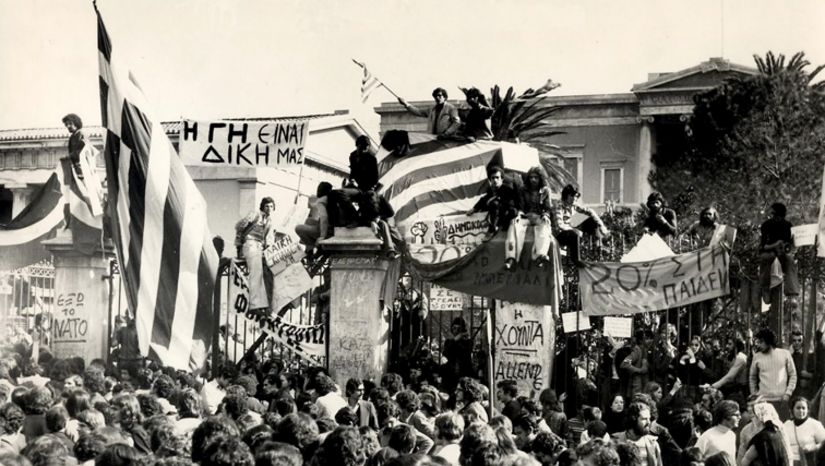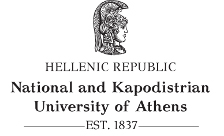- Αρχική
- NEWS AND EVENTS
- THE PROGRAM
- ADMISSIONS
- APPLICATION
- RESOURCES
-
ACADEMIC STAFF
- GEORGIOS ARABATZIS
- DIMITRA ANDRIANOU
- SOPHIA ANEZIRI
- ATHENA BAZOU
- GIORGOS BOUROGIANNIS
- AIKATERINI - NINA CARVOUNIS
- NIKOLAS DIMAKIS
- ELENI FASSA
- MYRTO GARANI
- NIKOS GIANNAKOPOULOS
- NIKOLAOS HAROKOPOS
- ROSALIA HATZILAMBROU
- NIKOLETTA KANAVOU
- CHRYSANTHOS KANELLOPOULOS
- GRAMMATIKI KARLA
- STYLIANOS KATAKIS
- EURYDICE KEFALIDOU
- KONSTANTINOS KOPANIAS
- AIKATERINI KOROLI
- EVGENIA D. MAKRYGIANNI
- STEPHANOS MATTHAIOS
- ANDREAS MICHALOPOULOS
- GIORGOS MITROPOULOS
- ANDREAS MORAKIS
- YIANNIS PAPADATOS
- SOPHIA PAPAIOANNOU
- AMPHILOCHIOS PAPATHOMAS
- VASSILIS PETRAKIS
- VAIOS VAIOPOULOS
- DIMITRIS PLANTZOS
- ELENI PSOMA
- MICHEL ROGGENBUCKE
- MARIANNA THOMA
- GIORGOS VAVOURANAKIS
- ANASTASIA VERGAKI
- IOANNIS VOSKOS
- TIMETABLE
- CONTACT
-
GALLERY
- VIDEOS
- PNYX, JULY 2021
- NATIONAL ARCHAEOLOGICAL MUSEUM, JULY 2021
- LYCEUM OF ARISTOTLE, NOVEMBER 2021
- THEATRE OF DIONYSUS, NOVEMBER 2021
- CRETE, NOVEMBER 2021
- ARCHAEOLOGY AND HISTORY OF ART MUSEUM AND CONSERVATION LABORATORY, SCHOOL OF PHILOSOPHY, DECEMBER 2021
- KERAMEIKOS, DECEMBER 2021
- EPIGRAPHIC MUSEUM, JANUARY 2022
- BRAURON, JANUARY 2022
- MYCENAE AND TIRYNS, APRIL 2022
- ANCIENT AGORA OF ATHENS, MAY 2022
- OLYMPIA AND DELPHI, MAY 2022
- NATIONAL ARCHAEOLOGICAL MUSEUM, JUNE 2022
- ACROPOLIS, JUNE 2022
- PARTICIPATION IN ARCHAEOLOGICAL SURVEY: IERAPETRA, CRETE, JULY-AUGUST 2022
- ANCIENT AGORA OF ATHENS, NOVEMBER 2022
- CRETE, NOVEMBER 2022
- CYPRUS BRANCH
ΑΝΑΚΟΙΝΩΣΕΙΣ
ANNIVERSARY OF THE POLYTECHNIC UPRISING

It was on the 14th of November 1973, six and a half years under the strict rule of the military junta that took over power on the 21st of April 1967, when Greek students began demonstrations at the School of Law and entered the Polytechneio (Polytechnic School), a building about 100 meters away from the National Archaeological Museum of Athens, in the city centre.
By that evening, police asked them to leave the premises, but the students decided to occupy the Polytechneio. By word of mouth, more people heard about the uprising and joined them. A pirate radio transmitter was set up and a call went out, inviting all Greeks to come to the Polytechneio and protest against the junta. Indeed, by the following day, the Polytechneio and the nearby area were packed with people who went to protest against the dictatorship, escalating thus to an open anti-junta revolt.
The police surrounded the area, stopping people from entering the building and asking the crowd to disperse, threatening with violence. There were reported shootings and killings. All the protesters moved inside the Polytechneio and the authorities decided to call in the army. By the early morning of the 17th of November, a tank arrived at the gate, with police repeating the call for people to come out of the Polytechneio and leave, but the protesters did not move.
The radio announcer inside the building was pleading with the soldiers to not carry out the orders to hurt their “brothers”, but the tank crashed the gate and entered the yard, ending the transmission. That protest ended in bloodshed even though the next day the dictatorship announced that no students had been killed once the police entered the Polytechneio.
Thus, the Athens Polytechnic uprising anniversary on the 17th of November is commemorated every year after the restoration of democracy in Greece.
